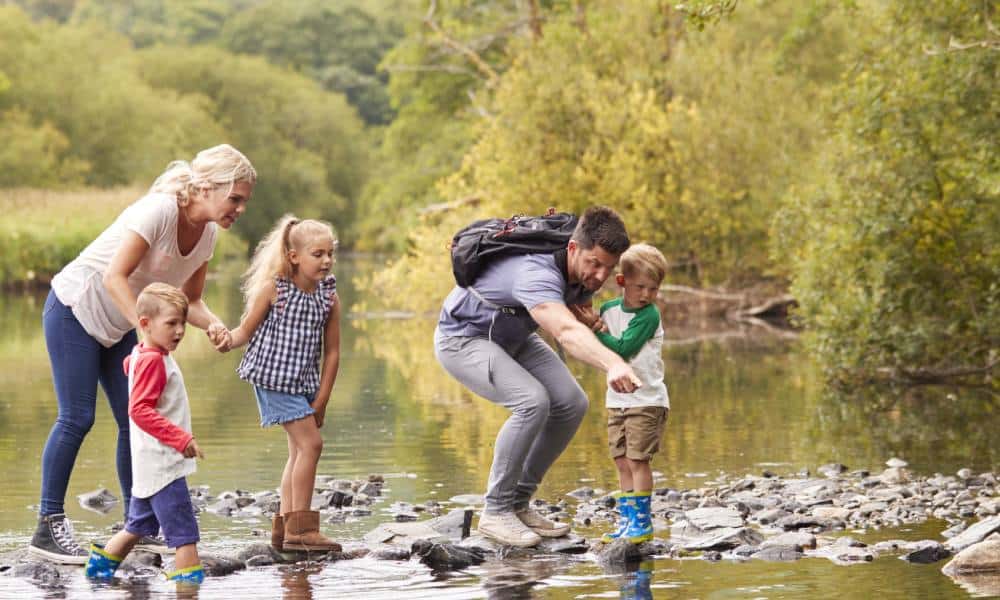The goal of good content marketing is more than just website traffic. You also need to keep visitors on your website – getting them engaged with your content so that they move step by step closer to becoming a customer.
That requires good content, which is what we’re looking at today. And of course it also requires well laid out content. It doesn’t matter how good it is if your site is visually unclear. I’ve written previously about design tips for readability – I’m assuming you’ve sorted out any major issues in this area.
So, let’s get down to some practical tips to help visitors connect with your content so they stay onsite.
1. Make sure each page is relevant and written for humans
It sounds simple. It should be.
‘Relevant’ means that someone who clicks to visit the page gets what they’re expecting.
- When they go to a page about residential painting services, they see an image of someone painting a house. Not a cafe or a warehouse.
- When they search for a recipe for lemon meringue pie and they click on a link, they get a recipe. Not a history of lemons and how to grow them. Not a story about how lemon meringue pie reminds the writer of their childhood.
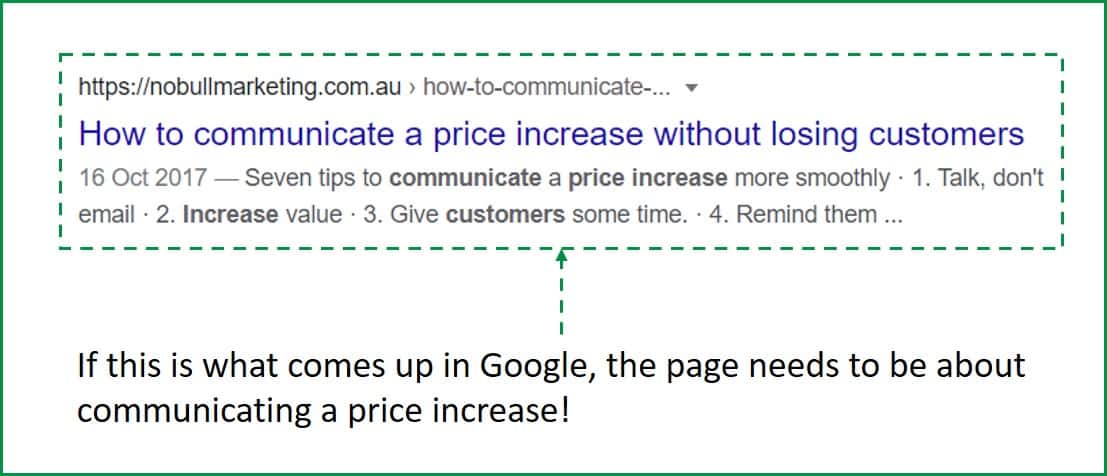
‘Written for humans’ means easy to understand and read. Not stuffed with keywords.
This is not written for humans:
Our company provides pest control services. We are the best pest control company in the city. Every member of our team is fully licensed in pest control, so you can be sure you will get excellent quality pest control. We have a full pest control warranty as well. So if you need pest control for termites, pest control for rodents, pest control for cockroaches or indeed any other kind of pest control, ask us first. For the best pest control at the best prices.
This is:
Our company provides the best pest control services in the city. Every member of our team is fully licensed, so you can be sure you will get excellent results. We have a full warranty on all our services as well. So if you need to deal with termites, rodents, cockroaches or indeed any other kind of pest, ask us first. For the best pest control at the best prices.
2. Pay extra attention to the content ‘above the fold’
‘Above the fold’ means everything users see when a page first loads, before they scroll down.
If you want to keep visitors on your website, this part of your content has to draw them in.
Remember, on a mobile screen, there may not be much visible at all. (Check Google Analytics to see how much of your traffic is mobile, but for consumer-facing sites, it’s likely to be more than half your traffic.)
I’ve seen sites where the only thing visible without scrolling is a header image. Pretty, but useless – especially if I’m after information. It might work for a shopping site, but you’d need great images.
If you need website content which works for humans and for SEO, we can help.
3. Help people find what they’re looking for
Sometimes visitors to your site are looking for general information – or don’t even know what exactly they’re looking for! There may be other pages on your site which are more useful than the one they landed on.
Other visitors to your site have a very specific query. They’re on the right page, but the answer won’t be above the fold.
Keep visitors like these on your site by giving them relevant options.
Site Search
If you’ve got no blog and three services, you don’t need this. If you’ve got a blog with more than a dozen posts, or if you’ve got a wide range of products or services, you need site search.
An added benefit of site search is that you can track what users are searching for on your site. That gives you more insight into their needs and intents.
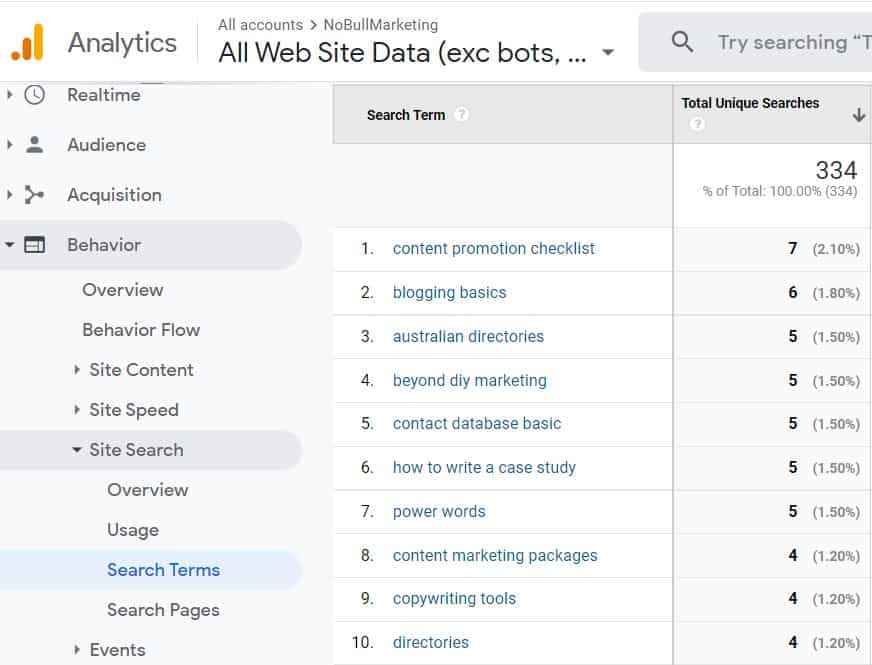
Navigating within the page
What about those people with very specific questions? If you have a long article, they may end up scrolling through scanning your headings to see if you cover what they are interested in.
A great alternative here is to include a table of contents or some quick links at the top of your page. (These links are called ‘anchor links’ – here’s an unattractive but really helpful and clear page which explains how to create them.)
Now your visitors can navigate quickly to the part of the page which is of most interest to them.
Here’s a great example from Hubspot:
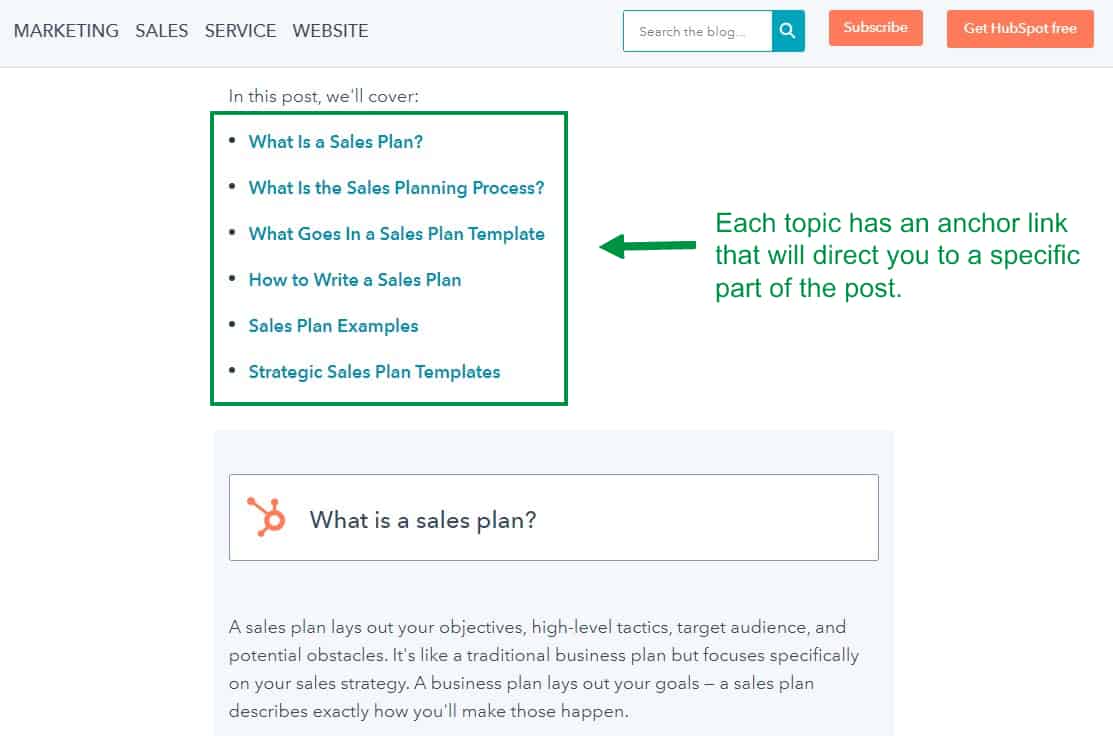
4. Keep visitors on your website by helping them to engage
So that’s the basics of helping visitors find what they wanted in the first place. But to keep visitors on your website and build an actual relationship with them, you need them to engage. The way you create and display your content can make this easier.
Make internal links as visible as possible
Let’s start with text links.
- The accepted convention is that underlined text is a link. Even if you don’t underline your links, don’t use underlines for anything else on your site.
- Text links are also often a different colour. Make sure it’s a very different colour so it stands out. And make sure the colour works on any backgrounds you use.
Look what happens to these menu links as a user scrolls down the page.
There are other ways to create links as well, though. Use these for important links to make them more visible.
Buttons are an internet convention. Just make sure your buttons
- look like buttons, so people know they can click on them
- have useful text on them so people know what to expect. ‘Download’ is more informative than ‘Click’. ‘Download the checklist’ is more informative than ‘Download’.
Images may or may not be clickable. But because so many images are, consider making at least your most important images clickable. For example, on our home page where we promote blog articles, you can click on the title (‘Latest from the Blog’), the image or the ‘Read More’ button. Whatever a particular user’s preference, they’ll get to the blog post.
If you have an image which is combined with other elements to make a call to action, always make it clickable.
Add a call to action wherever possible
For example, we have a blog post about power words, and we also have a downloadable list of power words. We could invite people to click through to the resources page and download the list from there. Or we could make it easier, by givng them an option to download right here, right now.
Always make it easier for the visitor to your website.
Some pages are specifically designed to convert people to subscribers or enquiries. Landing pages from ad campaigns. Pages describing your services or products. For these, it makes sense to have a call to action visible even as people scroll.
Case Study Buddy is an excellent example of this. Clearly visible calls to action at the top of the page, spread through it and then a full form at the bottom. It’s perfectly clear to any visitor what they want you to do next.
Here’s the top of their page:
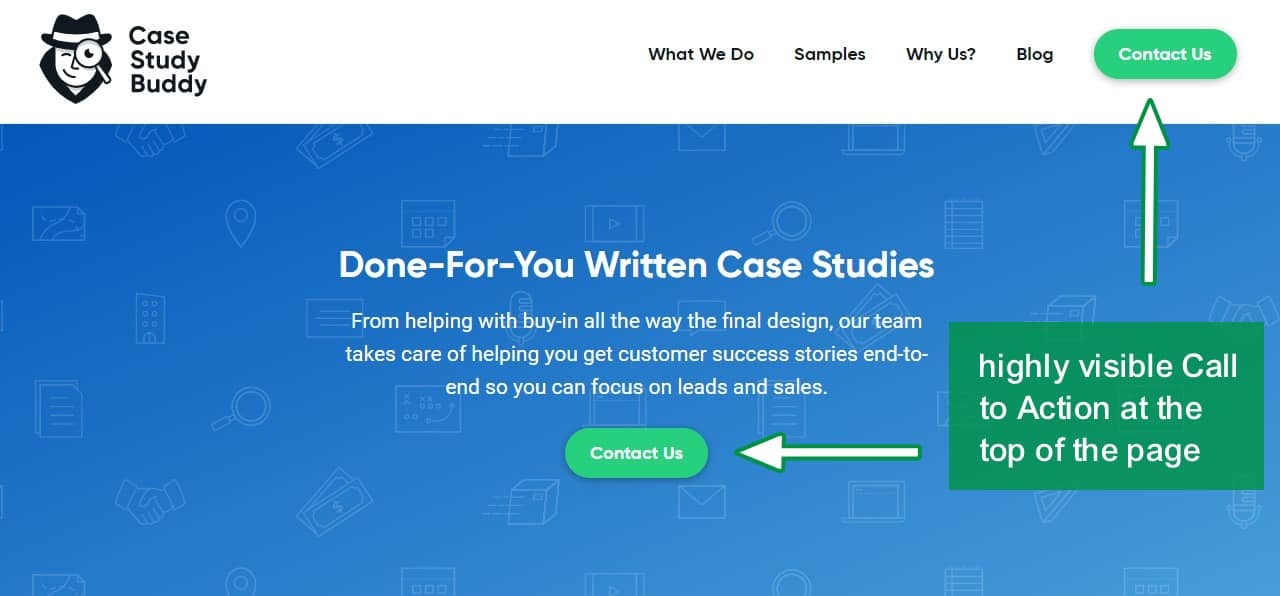
And here’s the form at the bottom:
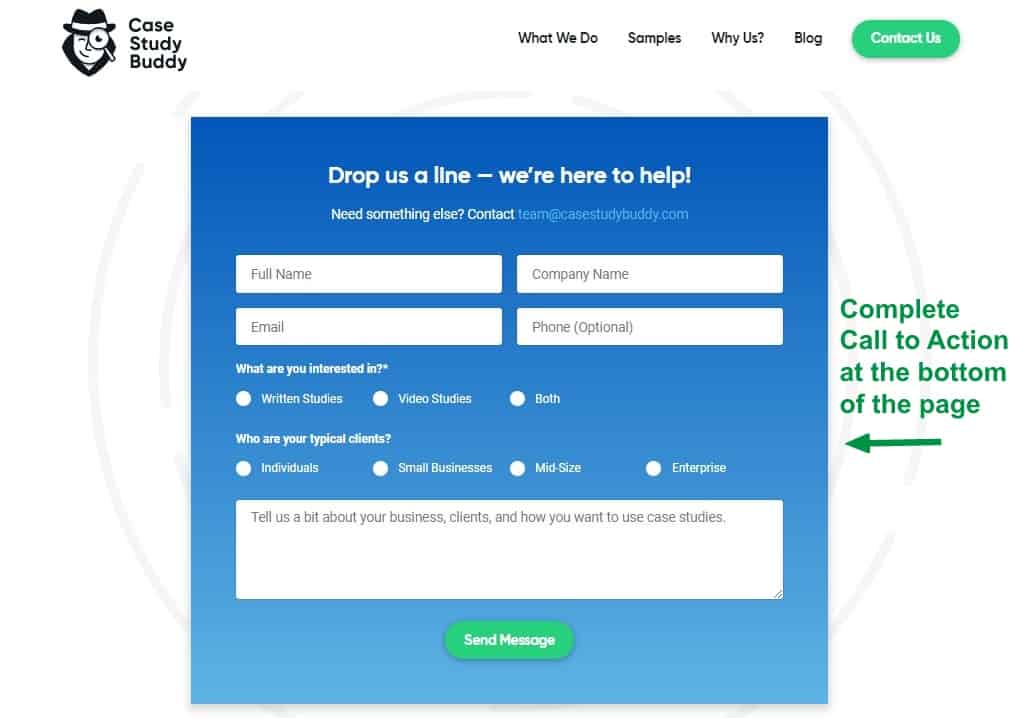
Relevant Posts
Another option to implement for blogs is a ‘relevant posts’ plugin.
When people reach the bottom of your blog post, that’s a good thing in itself! It means they were interested enough to read through. But what do you want them to do next? They may not be quite ready to contact you or subscribe, but you want to keep visitors on your website – so give them some ideas what to look at next.
If you use WordPress, there are many plugins which will suggest relevant posts automatically. I prefer to have some control, so I can nudge users in the direction I want them to go. (Towards popular posts, or ones with obvious downloads which convert well into subscriptions.)
If you don’t have any relevant posts, it may be a sign your content strategy has a few holes. Don’t be sad – that’s an opportunity!
For example, when we first put together our list of Australian business directories, it was far more successful than I expected. It was a little different from the other content we had at the time. When I saw the traffic , I had a think about the people accessing that page and what else they might be interested in. That’s where the idea for posts like the list of infographic submission sites and Quick Wins for SEO came from.
5. Summing up
If you want to keep visitors on your website, the single most important thing is the content. It must be relevant. It must be at least one of
- useful
- entertaining
- educational
But once you’ve got that kind of content, there are still things you can do onsite to make it work harder. Mostly, it’s about making the whole experience easier for your visitors – because people like what’s easy.
So why not take a look at your site with fresh eyes? Or ask someone who won’t be afraid to give you honest feedback. Decide what you can do to improve, and implement it!




